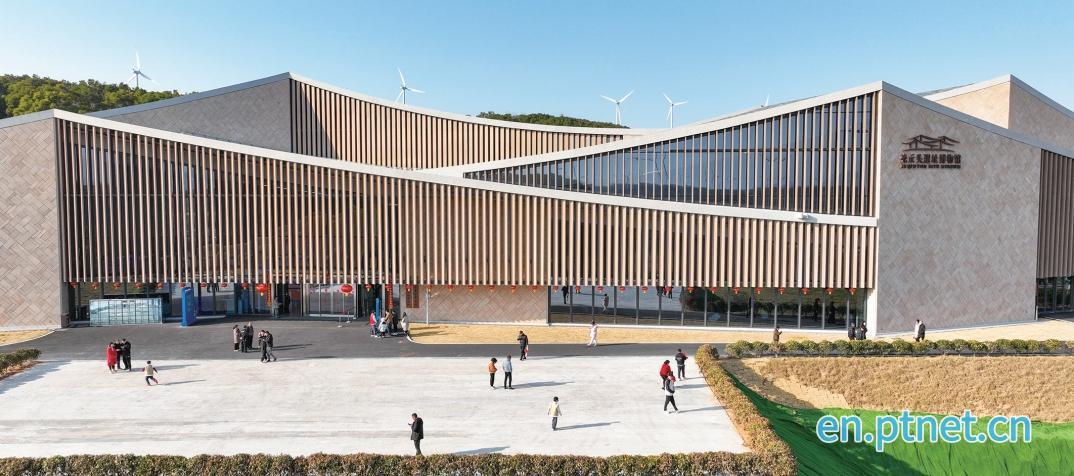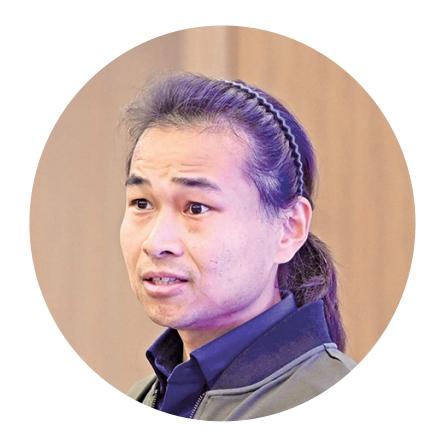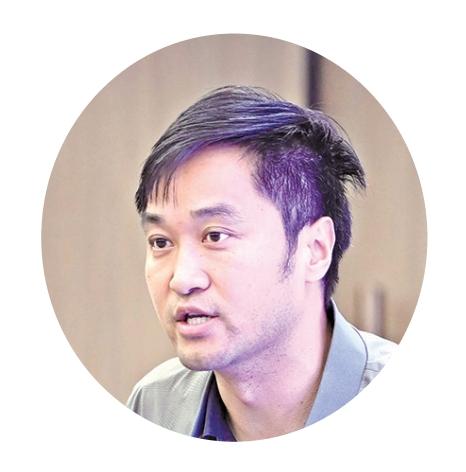Exploring Austronesian origins: A conference on cultural heritage in Pingtan
en.ptnet.cn | Updated:2025-04-14 | Lin Kongbo, Stephanie
The academic conference "Protection and Utilization of Austronesian Cultural Heritage" was held in Pingtan on the afternoon of April 9, 2025. Several experts and scholars discussed the origin, development, and dispersal of the Austronesian peoples from multidisciplinary perspectives. The guests also engaged in lively discussions on topics such as leveraging the role of public archaeology platforms and strengthening the excavation and utilization of marine cultural heritage, further promoting prehistoric archaeology and Austronesian cultural research and exchange in Pingtan.
Here are the key takeaways from the guest speakers:
Liu Guoxiang, deputy dean of the Chinese Academy of History and director of the Chinese Archaeological Museum:

The establishment of the Keqiutou branch of the Chinese Archaeological Museum, the first branch of the national museum, is of great significance for the Keqiutou site museum and the archaeological research of the Austronesian peoples.
The Chinese Archaeological Museum in Beijing will collaborate closely with experts at the Keqiutou site museum in areas such as academic exchange, exhibition planning, interactive interpretation, and building platforms in both Pingtan and Beijing.
The museum will incorporate content related to the Keqiutou site and Austronesian studies into its weekly lecture series on the origin of the Chinese nation.
The goal is to comprehensively showcase Chinese civilization to the world, highlighting its long history and exquisite artifacts, and the establishment of the Keqiutou branch is crucial for presenting the achievements of Austronesian archaeological research.
Zhou Zhenyu, director of the Center for Human Origin and Evolution Studies, Institute of Archaeology, Chinese Academy of Social Sciences:

Austronesian archaeological research is a significant international academic field concerning the origins of populations in numerous South Pacific islands. Research increasingly points to the southeastern coast of China as the origin of the Austronesian peoples.
Archaeological work along the Fujian coast has established an archaeological cultural framework for the western side of the Taiwan Straits and provided a basic understanding of settlement ecology and the evolution of settlement patterns.
The archaeological findings at the Keqiutou site complex confirm a close connection with the Dapenkeng culture of Taiwan. The archaeological sequence established at the site, dating from 7000 to 3000 years ago, clarifies the cultural features and reveals the characteristics, development, and evolution of the population at that time.
Archaeological discoveries also reveal the diverse subsistence patterns of the Austronesian ancestors, including marine resources, abundant terrestrial resources, and agricultural remains, indicating a dual maritime and continental lifestyle consistent with early outward migration from the Chinese mainland.
Multidisciplinary research is essential for a comprehensive understanding of the origin and development of the Austronesian peoples. Future research will expand to the middle and lower reaches of the Minjiang River and the Mindong (Eastern Fujian) and Zhejiang regions to explore interactions with inland cultures and the broader context of the origin and development of Chinese maritime civilization.
Lou Jianlong, director of the Fujian Museum:

The establishment of the Keqiutou branch of the Chinese Archaeological Museum is a milestone for archaeological research and cultural tourism development in Pingtan and Fujian.
Modern museums should emphasize research, preservation, and cultural education functions, aiming to showcase and disseminate the excellent history and culture of the Chinese nation through unearthed artifacts.
To maximize the educational role of museums, it is necessary to enhance the visitor experience by moving from simply displaying artifacts (1.0 era) to telling the cultural and historical stories behind them (2.0 era) and finally to creating immersive experiences (3.0 era) using technologies like holographic projections and VR.
It is suggested that the Keqiutou branch of the Chinese Archaeological Museum could focus on its unique "archaeology" element and collaborate with the local Keqiutou site to create a distinctive archaeological park or heritage park, promoting the deep integration of culture and tourism and bringing the rich cultural heritage to the public in a more vivid way.
Zhang Wenjie, deputy dean of the School of History and Cultural Heritage, Xiamen University:

The Xiying site in Pingtan has been subject to exploration since 1992, with excavations in 2022 and 2023 covering 1200 square meters. Analysis of samples indicates that the BK1 sub-layer of the shell midden dates back to 6800 to 6500 years ago.
Flotation of soil samples from the shell midden revealed mainly wild plant remains rather than large-scale crops. Animal remains include 22 species, all wild, indicating a subsistence economy based on hunting and fishing. Deer were the most common mammals, and fish remains suggest fishing occurred primarily in nearshore estuaries and rocky coasts.
Stable isotope analysis of early human remains from the Xiying site suggests a typical marine-based subsistence, with a diet mainly composed of marine resources at a higher trophic level than terrestrial organisms, indicating a stable food source.
Differences in pottery types, incised patterns, and spatial distribution between the Xiying and Keqiutou sites suggest potential early cultural exchange between agricultural populations migrating southward from the middle and lower reaches of the Yangtze River and the early hunting populations in the southeast around 7000 to 6000 years ago. New cultural elements and economic production methods may have influenced the Xiying population, leading to gradual changes in pottery and lifestyle, resulting in distinct cultural differences between the earlier and later layers of the site.
Zhang Linhu, deputy dean of the School of History, Renmin University of China:

Traditional museums often have a one-way transmission of knowledge. Future museums should move towards more interactive and experiential models, allowing the public to understand not just what an artifact is, but also how it was made, how ancient people lived, built homes, and obtained food.
Pingtan has provided a good platform for various sectors of society. In the future, it can welcome participation from various cultural heritage disciplines, including environmental archaeology, to reconstruct how prehistoric humans lived in the Pingtan area.
Austronesian archaeological research is inherently multidisciplinary, integrating archaeology, cultural anthropology, biological anthropology, and linguistics. While traditional Chinese archaeology, relying mainly on historical methods, has advantages in understanding the origins of its own civilization, it needs to incorporate multidisciplinary perspectives for overseas and cross-cultural comparative studies.
It is proposed to build a diverse and interactive research model based on heritage park platforms, involving public participation, scholar interaction, and interdisciplinary exchange, focusing not only on cultural origins but also on topics such as subsistence changes and human health from a cultural ecology perspective.
Pingtan is actively applying for a heritage park project, which is expected to provide broader space for the overall protection and inheritance of prehistoric civilization.
Deng Xiaohua, dean of the Austronesian Research Institute, Fujian University of Technology:

Through linguistic, archaeological, and genetic analysis, the origin and formation of the Austronesian peoples and their historical connections with the Kra-Dai (Zhuang-Dong) language family have been deeply analyzed. Reconstructing the Bayesian phylogenetic tree and time depth of the Austro-Tai language family, the spatio-temporal range of the common ancestor of the Kra-Dai and Austronesian language families has been traced back to the coastal areas of Minyue more than 7000 years ago.
The term "Austronesian" is primarily a linguistic classification referring to speakers of the Austronesian language family, the most widely distributed maritime ethnic group in human history, with 1000 to 1200 extant dialects and nearly 400 million speakers.
The origin and dispersal of the Austronesian peoples is a prominent and debated topic. Since the identification of the Austronesian community, academic research has spanned a century, yielding numerous results alongside some controversies. Therefore, research on the Austronesian peoples must integrate the strengths of different disciplines and multiple perspectives, especially combining archaeological and linguistic findings, to further explore the cultural core of the Austronesian peoples.
While the concept of "Austronesian" is familiar, its complexity is often underestimated. In the 1960s, renowned archaeologist and anthropologist Zhang Guangzhi, along with other scholars, combined archaeology and linguistics to study the migration routes of indigenous peoples between South China and the Pacific Islands, proposing that the southeastern coast of the Chinese mainland, particularly the coast from the Minjiang River estuary to the Hanjiang River estuary in Fujian and eastern Guangdong, was the origin of the Austronesian peoples.
Linguistic research has found core cognates between Austronesian and the structurally different Kra-Dai and Chinese dialects, indicating a genetic relationship between Austronesian languages spoken in Taiwan and the Pacific Islands and the Kra-Dai languages, thus confirming that the Austronesian peoples originated in the Chinese mainland.

